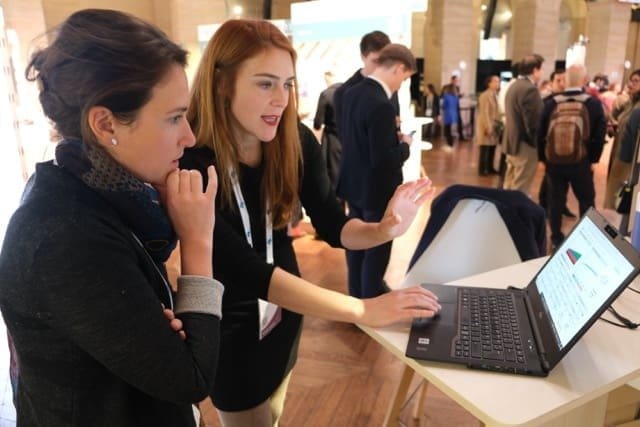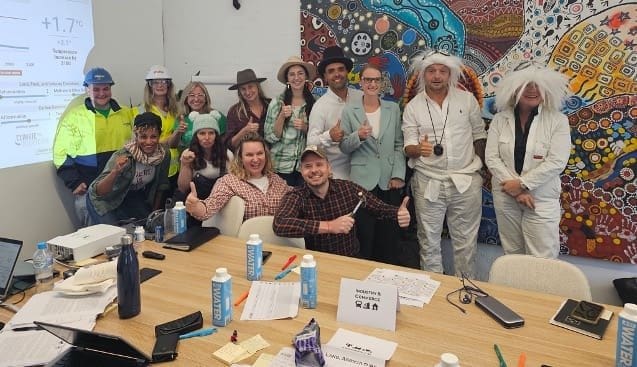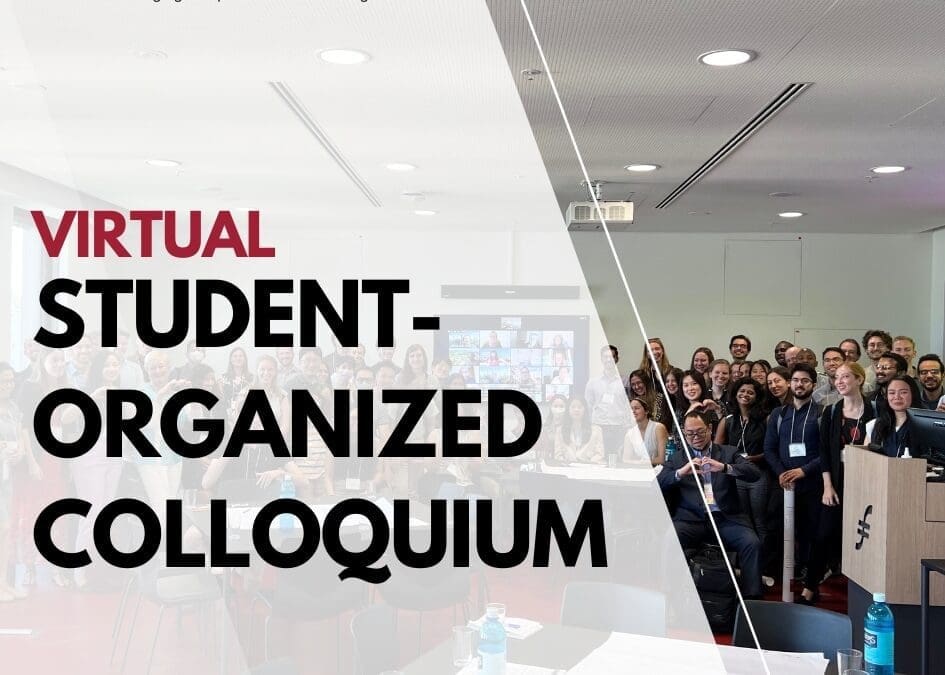Marketing Roundtable: Evaluating and Evolving Our Communication Efforts
September 12 at 11 am NY | 4 pm London | 11 pm Beijing | Time Converter
How Did En-ROADS Get 755,000 users? Lessons on Modeling, Interface Design, and Facilitation
How Did En-ROADS Get 755,000 users? Lessons on Modeling, Interface Design, and Facilitation
Achieving widespread engagement is a significant challenge with a System Dynamics model. Yet, En-ROADS, the climate solutions simulator co-developed by Climate Interactive and MIT Sloan, has captivated hundreds of thousands of users globally. In this webinar led by Andrew Jones, John Sterman, and Florian Kapmeier, the team shared how their commitment to System Dynamics modeling principles, innovative interface design, and thoughtful facilitation created a global movement. The lessons learned are relevant for all System Dynamics modelers seeking to make a greater impact in their fields.
1. Modeling: Build Trust and Ensure Accuracy
“You have to have a rigorous, evidence-based model that is fully documented and tested every which way.” John Sterman
En-ROADS’ impact is built on a robust modeling foundation that adheres to rigorous standards of transparency and continuous testing. John Sterman underscores the importance of rigorous validation: “You have to have a rigorous, evidence-based model that is fully documented and tested every which way,” he states, highlighting the necessity for clear, accessible documentation that allows users to understand and trust the model’s operations.
The En-ROADS team enhances model reliability by calibrating past model behavior against historical data (by, e.g. Lazard, the IEA, etc.) and comparing future model behavior against the behavior of climate models used by the Intergovernmental Panel on Climate Change (IPCC), identifying discrepancies not only to prove correctness, but also to pinpoint areas needing improvement. Andrew Jones elaborates on this process: “We compare the model against historical data to understand where the discrepancies are and how we can improve. It’s not about proving the model’s correctness but about identifying areas for growth and improvement.”
For System Dynamics modelers looking to build confidence in the model, these practices are essential. Providing full transparency through comprehensive documentation and continuously validating models against industry benchmarks are crucial steps in establishing credibility. By adhering to these principles, modelers can ensure their models are technically robust and able to support decision-making.
2. Interface Design: Guide Users to Key Insights
“We designed the interface to lead a user to discover our modelers’ top insights without support.” Andrew Jones
En-ROADS’ interface is designed to ensure users reach key insights intuitively. Andrew emphasized the goal: “We designed the interface to lead a user to discover our modelers’ top insights without support.” The interface offers both a beginner mode for quick understanding and an advanced mode for users with more technical skills, providing detailed charts and additional assumptions. Dynamic visuals and animations transform static data into a narrative, making complex concepts accessible and engaging.
Within a few minutes exploring the En-ROADS interface, new users quickly grasp three critical insights:
- “It’s still possible” – to bend the emissions curve and reduce average temperature increase.
- “There’s no silver bullet”, highlighting that no single solution can solve the climate crisis.
- “Many solutions together”, emphasizing that combining multiple climate solutions is necessary to mitigate the climate crisis.
An interface designed around key insights helps users understand complexity. The ease of engaging with a new innovation—trialability—is crucial for initial adoption and fostering word of mouth. Yet, negative experiences can lead to adverse feedback, potentially stifling the adoption and diffusion of the model. Sterman emphasized: “if people try something and have a bad experience, they will generate unfavorable word of mouth that can squelch the adoption and diffusion of your model.”
John Sterman emphasizes the consequences of neglecting interface quality: “Suppose you have the world’s greatest model, but a terrible interface. Nobody learns anything, nothing will change, and you and everyone have wasted precious time and resources. That’s a failure mode.” But he warns, “The opposite, though, is far more dangerous: a great interface with an underlying model that lacks integrity and hasn’t been carefully tested means you’re helping people learn things that are wrong and possibly downright harmful far more effectively than ever before.”
By focusing on intuitive design and rigorous validation, En-ROADS ensures that the simulation is insightful and reliable for understanding possible climate solutions. This strategy serves as a reference for those aiming at making their models both informative and influential. As a System Dynamics Modeler, which 2-3 key takeaways would you like users to learn from your model?

3. Facilitation: Create a Safe Space for Learning
“Make sure that you create a safe room where participants can share and challenge their mental models to allow them to engage deeply and learn together.” – Florian Kapmeier
Facilitation is critical to En-ROADS’ global impact. Through experiences like the interactive En-ROADS Climate Workshop and the roleplaying game Climate Action Simulation Game, Climate Interactive effectively conveys the insights of the model by fostering environments that encourage deep learning and reflection. Florian Kapmeier emphasized the importance of these settings: “Make sure that you create a safe room where participants can share and challenge their mental models to allow them to engage deeply and learn together.” This approach allows participants to openly test their assumptions and understand the underlying dynamics of climate change.
Florian, referred to Andrew’s Top 10 Tips to Engage People with a System Dynamics Model, highlighting one key aspect: By asking participants to mentally the likely impact of a climate solution on the temperature before running a scenario in En-ROADS, participants reveal their existing mental models and learn more effectively by comparing their understanding with model results. “Learning happens when the theory of thinking is laid out and people have to make a choice.”
The commitment to creating a secure and open space for dialogue is foundational to the success of the engagements with En-ROADS. This facilitation strategy enhances the participants’ ability to understand complex concepts, and encourages them to apply these insights in practical and impactful ways. By ensuring that each session serves as a safe space for exploration and challenge, Climate Interactive fosters an environment where transformative learning and genuine understanding can occur.

Climate Action Simulation for IKEA, Australia
Community & Policy Engagement
Community building has been fundamental to extend En-ROADS’ reach globally. Thousands have completed the Mastering En-ROADS training program, which empowers facilitators to engage diverse audiences. The En-ROADS Climate Ambassador program further nurtures hundreds of facilitators who provide En-ROADS Workshops and Climate Action Simulations worldwide, ensuring a unified network of like-minded advocates. This well-structured support system ensures that these facilitators are equipped to spread their knowledge effectively, fostering a collaborative and impactful community.
In addition to training and support, Climate Interactive’s team emphasized the importance of engaging with policy makers, adapting communication to meet where they are in terms of climate change understanding. Presenting complex model data in an accessible manner is crucial for meaningful engagement. This strategy ensures that decision-makers receive information and are equipped to act on it.
The Power of System Dynamics
“System Dynamics is the most powerful way to engage other people in ways to improve system performance.” – John Sterman
The success of En-ROADS hinges on a commitment to the core principles of System Dynamics, paired with innovative interface design and effective facilitation strategies. This approach has educated a global audience on climate solutions and empowered them to act. John Sterman, reflecting on the broader implications, asserts, “System dynamics is the most powerful way to engage other people in ways to improve system performance”, underscoring the potential of System Dynamics to facilitate meaningful discussions and drive change across various domains.
Sterman reminded the audience that the discipline’s strength lies in its ability to convey complexity in a way that decision-makers can understand and act upon: “System Dynamics modelers need to invite people into the conversation, to join the collective effort and improve system performance together.” This collaborative spirit is reflected in the global network of facilitators, policymakers, and climate advocates brought together by En-ROADS.
As System Dynamics modelers, the challenge is to not only build robust models but also to design engaging interfaces, facilitate participatory workshops, and nurture a community of like-minded advocates. By doing so, modelers can extend their influence beyond their field and create meaningful change in the world.
Watch the recording below
Recent Posts
Society Governance Updates
New System Dynamics Society leadership
Call for Presenters: Seminar Series
Share your insights in the System Dynamics Society Seminar Series. Submit your proposal and join a global community of experts
Honoring Excellence: A Glimpse into the Awards of the International System Dynamics Conference
Dive into the prestigious awards and honorable mentions of the International System Dynamics Conference, celebrating trailblazers and emerging talents in the field
Upcoming Events

VIRTUAL | Student-Organized Colloquium 2024
Open to all! Bringing together students and practitioners from different industries to share ideas, and develop modeling skills
Recent Business cases
System Dynamics Helps Evaluate Anticipatory Action on Cholera Outbreaks
Humanitarian agencies encourage anticipatory action in disaster response to cholera outbreaks in the Democratic Republic of Congo.
Management Design for Planted Forests in Japan Using System Dynamics
Hanno City in Saitama Prefecture used a system dynamics model to enable detailed analysis of labor requirements and changes in forest conditions.
Solving Bottlenecks in Dairy Production Facilities with System Dynamics
FriedslandCampina employed system dynamics to strategically enhance production efficiency in the midst of factory merging.
Join us
Making Systems Mapping Accessible
June 26 at 11 am NY | 4 pm London | 11 pm Beijing | Time Converter
From Text to Map: A System Dynamics Bot for Constructing Causal Loop Diagrams
May, 15 at 11 am NY | 4 pm London | 11 pm Beijing | Time Converter
From Text to Map: A System Dynamics Bot for Constructing Causal Loop Diagrams
Join us to delve into the innovative System Dynamics Bot, a tool designed to automate causal loop diagram creation from text. Learn how it performs in converting text to maps, see practical examples, and understand the challenges and solutions in its development.
Learning Outcomes:
- Gain insight into the capabilities of large language models in system dynamics and model building.
- Understand the effectiveness of the System Dynamics Bot in identifying key relationships within textual data.
- Discover the challenges encountered and solutions implemented during the development of this tool.
This webinar is ideal for system dynamics practitioners, data analysts, and anyone interested in the intersection of artificial intelligence and model building. Sign up to explore how this technology can streamline your modeling processes and enhance your understanding of complex systems.
About the Presenters
Niyousha Hosseinichimeh has a PhD and a master’s degree in public administration and policy from State University of New York at Albany, and a bachelor’s degree in mechanical engineering from Sharif University, Iran. She is currently an assistant professor at the Department of Industrial and Systems Engineering at Virginia Tech. Her research focuses on developing and applying methods to improve health and healthcare systems. She uses simulation models to help stakeholders improve their understanding and decision making in complex dynamic systems. She has applied system dynamics approach to diverse health issues including infant mortality, mental health, and alcohol impaired driving among teens. Her methodological contributions include expanding calibration methods for dynamic models and developing techniques for system dynamics group model building. Her research has been funded by the National Institute of Health, National Science Foundation, Agency for Healthcare Research and Quality, Ohio State Department of Health, and Burroughs Wellcome Fund.
Artificial Intelligence and System Dynamics in Business and Management
April 3 at 11 am NY | 4 pm London | 11 pm Beijing | Time Converter
This webinar presents the dynamic interplay between Artificial Intelligence (AI) and System Dynamics (SD) in business and management. As AI’s role in solving complex challenges and redefining system interactions grows, it becomes imperative to examine its synergistic relationship with System Dynamics.
This session unveils the results of a thorough literature review, employing integrated bibliometric and topic modeling techniques to probe the extent and nature of AI and SD’s convergence in business and management. Our study focused on a pivotal research question: “To what extent and in which direction is the literature on Artificial Intelligence (AI) and System Dynamics (SD) converging within the business and management landscape?”
Highlights of our findings:
- In-depth bibliometric analysis: uncovered the intersections of academic discussions on System Dynamics and AI, charting the evolution and patterns of their convergence.
- Advanced topic modeling discoveries: delved into the intricacies of AI and System Dynamics integration, as revealed by cutting-edge topic modeling, offering a granular view of this convergence.
- Dual convergence pathways: assessed the nuances of “soft convergence,” where AI enhances System Dynamics with a focus on social dynamics, against the backdrop of “hard convergence,” where AI is a catalyst in reengineering system design and interdependencies.
- Emerging trends and strategic implications: presented a reflection on why soft convergence currently dominates the business landscape and how hard convergence could emerge as a groundbreaking approach in System Dynamics research and application.
The webinar welcomes scholars, researchers, and industry practitioners. This session seeks to provide insights and forward-thinking perspectives on the intersection of these two fields.
About the Presenters
Francesca Iandolo, PhD, is a Tenure-track Assistant Professor in Management at Sapienza University of Rome. She graduated with her master’s degree in accounting with honours and holds a PhD in Management with a dissertation thesis on Viable Systems Approach (vSa), value creation, and sustainability. Her research interests concern the application of systems theories to corporate sustainability and the role of technology diffusion within digital platforms. Francesca serves as a Representative of the Researchers in the Department Board of Management and the Faculty Board of the Faculty of Economics at Sapienza University of Rome. Additionally, she is the Academic Coordinator for Mobility at the Faculty of Economics, Sapienza University of Rome. She participated in several national and international conferences as a track proponent and chair and published in national and international journals. She is a chartered accountant and junior consultant for private companies.
Giuliano Maielli’s research spans the fields of business history and organization studies. His work focuses upon technological and organizational innovation through the analytical lens of “design hierarchies”, with a particular interest in path-dependence and path-creation as socio-organizational phenomena. Giuliano has published peer-reviewed academic papers on these topics, while his current research revolves around platform innovation dynamics, the internet of things and industry 4.0.
Stefano Armenia is a Tenure-track Lecturer (Ricercatore TDB) in Business Organizations and in the Analysis of Dynamical Systems at the Università Telematica degli Studi in Florence., where he teaches “Business Organizations” and “Marketing communication techniques”. He holds a degree in Computer Engineering, Industrial Automation & Control Systems, a Ph.D. in Business Engineering and a Master in Management and Business Administration. He is member of the System Dynamics International Society (SDS) since 2002, President of the System Dynamics Italian Chapter (SYDIC – the Italian Network of the SDS) since 2011 and member of the SDS Policy Council from 2014 to 2022, where he also acted as VP Chapters & SIGs. From 2014 to 2017 he has also been the IT & Communication Officer of the European Academy of Management. In 2021 he has obtained the national scientific status as associate professor in Business Organizations (ASN 2021, SSD: SECS-P/10, 3 out of 3 median indicators) His professional background includes extensive knowledge of main funding programs at national (Italian) and International level with a specific experience on research programs. Among his previous roles, he has acted as Bid Manager, Project Manager and Professional Consultant in several fields, both in the Public Administration and Industrial environments. In his research work, he deals with the analysis of complex systems dynamics in many fields: cybersecurity, critical infrastructure protection, logistics and sustainable transportation, finance, technological innovation, policy modelling and assessment of impacts of innovation and new technologies (Digital Transformation) on organizational processes and on society. From 2014 to 2020 he has been co-editor in chief of the Kybernetes Journal (Emerald-Insights) and currently is Associate or Guest editor in several other scientific journals in the field of system dynamics (IJASS, IJMABS). He is an author of several papers in top-ranked journals and has been involved in various initiatives dealing with sustainable development and Climate Change (he has led the Climate Action Exercise in several previous occasions, both at public and private level). He has been involved in different researches dealing with sustainable development and other environmental issues (i.e. Carbon Capture & Sequestration, Urban Sustainable Development, etc.) as well as with the translation of sustainability best sellers (i.e.: “Thinking in Systems” by Donella Meadows).
Pietro Vito, PhD in Management, is a researcher in Economics and Business Management at the Sapienza University of Rome. His research interests cover the methodological aspects of business management from a systemic and vital perspective, as well as thematic aspects related to sustainability, environmental protection, intellectual capital, and artificial intelligence.





